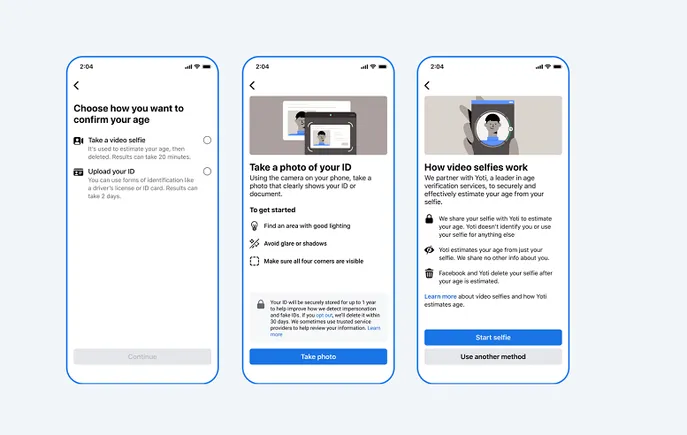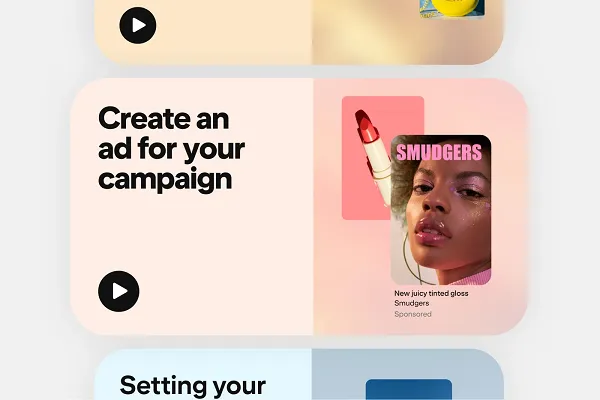# Meta Could Be Trying to Develop Age Checks Utilizing Video ID

With numerous areas contemplating new legal guidelines to additional limit teen entry to social media, one of many lingering challenges is how the platforms really cease kids from accessing their apps.
As a result of the present techniques received’t do it. For instance, analysis performed by Frequent Sense Media again in 2022 discovered that the day by day common display screen time for teenagers aged between 8 to 12 continues to extend year-over-year, with a good portion of that point now being spent in social media apps, whereas TikTok has reported that round a 3rd of its U.S. customers are below 14, although many aren’t registered at that age.
Regardless of the platforms limiting entry to these over 13 at a minimal, it’s clear that many kids are bypassing the present techniques. Which makes enforcement of any additional age limits largely untenable in any authorized sense.
That’s a key drawback in Australia’s push to ban teenagers below 16 from social apps, which is able to embrace penalties for the platforms in the event that they fail to implement such. As a result of there’s at the moment no common system in place that might allow the platforms to stick to such restrictions, past what they have already got in place.
Certain, they will proceed to go it alone, however we all know that received’t work. And with that being the case, what’s the following greatest system to implement app entry limits, and guarantee a stage enjoying subject for all apps on this respect?
Meta has argued that the app shops are higher positioned to enact such restrictions, as a result of they’re the hyperlink between customers and apps. In addition they have all the knowledge on every machine consumer, and as such, they’re seemingly in a significantly better place to implement broader checks and balances, versus leaving it as much as every app.
Apple has made some strikes on this course, by not too long ago updating its thresholds for teen app entry. However it stays hesitant to tackle the function of arbitrator for this component, as that might then open up each Apple and Google themselves to any authorized penalties ensuing from underage entry.
Meta has additionally trialed third get together age-checking, utilizing video evaluation from Yoti to estimates an individual’s age.
Meta’s rolled this out in chosen areas, throughout each Fb and Instagram, but it surely stays, successfully, in take a look at mode because it continues to evaluate the choice.
Although it may very well be seeking to broaden it quickly. This week, Meta has up to date its Assist Middle itemizing on ID verification to incorporate this be aware:
“Fb contracts with Yoti, a third-party age verification service, to make sure an age-appropriate expertise for our customers. Yoti gives numerous strategies for verifying age on Fb and is verified by the Age Verify Certification Scheme. Yoti is used throughout a number of industries world wide, together with social media, gaming and age restricted e-commerce.”
The Age Verify Certification Scheme (ACCS) gives further assurance of age checking processes, with the U.Ok. authorities amongst many organizations which have integrated ACCS certification into their security parameters. The ACCS can be operating trials of age assurance techniques for Australia’s proposed teen social media legal guidelines.
The addition of this be aware in Meta’s documentation might counsel that it’s now seeking to broaden its reliance on Yoti’s video ID instruments to verify consumer ages, whereas Meta additionally not too long ago introduced that it’s increasing its use of Face ID to supply extra safety for prime profile customers.
Face ID is a delicate space, with numerous violations of knowledge privateness stemming from facial recognition instruments. And that might go double for younger customers, however perhaps, if Meta’s trial of Yoti’s video ID system is producing good outcomes, that might provide a manner ahead to implement a extra strong, more practical age-checking course of.
And with the Australian authorities nonetheless planning to implement its up to date age restrictions this yr, by way of assurance and recommendation from ACCS, it will make sense for Meta to include this similar mannequin into its personal techniques, aligning with the popular technique of Australian authorities.
So perhaps, quickly, we’ll all have to supply face ID to entry social apps. Which many can be less-than-happy about, but it surely does look like this can be one of the best methodology for facilitating age verification, at a platform stage at the least.
An app retailer stage, there are extra choices to contemplate. However I doubt that Apple’s going to tackle that accountability and not using a important battle.
Andrew Hutchinson




